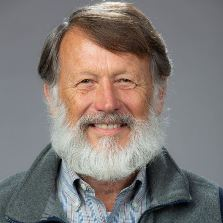Biofouling and Antifouling: Application of Omics Technologies
A special issue of International Journal of Molecular Sciences (ISSN 1422-0067). This special issue belongs to the section "Molecular Microbiology".
Deadline for manuscript submissions: closed (30 October 2023) | Viewed by 7754
Special Issue Editors
Interests: biofouling; antifouling; microbial biofilms; marine biotechnology; marine natural products; chemical ecology
Special Issues, Collections and Topics in MDPI journals
Interests: environmental toxicology; marine fouling; environmentally benign antifoulants; plastic pollution
Special Issues, Collections and Topics in MDPI journals
Special Issue Information
Dear Colleagues,
Biofouling refers to the undesirable accumulation and deposition of living organisms on submerged hard surfaces. The initial stages of biofouling are represented by biofilms, which are composed of assemblages of different microorganisms incorporated into exopolymeric substances and attached to each other and to substrata. The bioactive compounds produced by the microbes in biofilms can induce or inhibit the larval recruitment of invertebrates. Biofouling causes significant problems to the maritime industries. Current antifouling technologies are based on using toxic biocides. Thus, novel environmentally benign antifouling solutions are urgently needed. In order to develop them, it is necessary to elucidate the molecular effects of antifouling compounds on marine organisms. “Omics” technologies, such as genomics, transcriptomics, proteomics, and metabolomics, can lead to innovative breakthroughs in antifouling technologies and can help us to understand the process of biofouling. This Special Issue targets research results focusing on the investigation of changes in biofouling communities including pro-fouling and anti-fouling using the novel “omics” approaches.
Prof. Dr. Sergey Dobretsov
Prof. Dr. Daniel Rittschof
Guest Editors
Manuscript Submission Information
Manuscripts should be submitted online at www.mdpi.com by registering and logging in to this website. Once you are registered, click here to go to the submission form. Manuscripts can be submitted until the deadline. All submissions that pass pre-check are peer-reviewed. Accepted papers will be published continuously in the journal (as soon as accepted) and will be listed together on the special issue website. Research articles, review articles as well as short communications are invited. For planned papers, a title and short abstract (about 100 words) can be sent to the Editorial Office for announcement on this website.
Submitted manuscripts should not have been published previously, nor be under consideration for publication elsewhere (except conference proceedings papers). All manuscripts are thoroughly refereed through a single-blind peer-review process. A guide for authors and other relevant information for submission of manuscripts is available on the Instructions for Authors page. International Journal of Molecular Sciences is an international peer-reviewed open access semimonthly journal published by MDPI.
Please visit the Instructions for Authors page before submitting a manuscript. There is an Article Processing Charge (APC) for publication in this open access journal. For details about the APC please see here. Submitted papers should be well formatted and use good English. Authors may use MDPI's English editing service prior to publication or during author revisions.
Keywords
- Biofouling
- Inhibition of settlement
- Microbial biofilm
- Metagenomics
- Metabolomics
- Transcriptomics
- Proteomics
- Next generation sequencing







